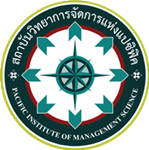Innovative Leadership of School Administrators Under of Tak Secondary Educational Service Area Office
Keywords:
Innovative Leadership, School AdministratorsAbstract
The purpose of this research is to study the innovative leadership of school administrators in the schools under the jurisdiction of the Tak Secondary Educational Service Area Office and to compare the innovative leadership of school administrators in these schools based on the teachers' academic qualifications, work experience, and school size. The research instrument used was a questionnaire, and the sample consisted of 262 teachers and education personnel under the Tak Secondary Educational Service Area Office. Data analysis of the respondents’ general information was conducted using frequency, percentage, mean, and standard deviation. To compare the innovative leadership of school administrators, an F-test was applied, specifically using One-way ANOVA. The findings revealed that the overall innovative leadership of school administrators was at a high level. When considering the individual aspects, the highest average score was found in the area of visionary innovation, followed by innovative thinking, innovative personality, innovative teamwork, and innovative resilience, respectively. Additionally, the comparison of innovative leadership in school administrators based on factors that influence the perception and opinions of innovative leadership found that administrators' leadership in innovative thinking, innovative personality, and visionary innovation differed across groups with different positions. Furthermore, administrators' leadership in innovative thinking and innovative personality was significantly different based on work experience. Lastly, comparisons of school size revealed statistically significant differences in all five aspects of innovative leadership.
References
กัลยา พรมทิพย์. (2558) ภาวะผู้นำของผู้บริหารตามทัศนะของครูมัธยมทศึกษา ในจังหวัด
นครศรีธรรมราช. วิทยานิพนธ์หลักสูตรศึกษาศาสตรมหาบัณฑิต สาขาวิชาการบริหารการศึกษา วิทยาลัยเทคโนโลยีภาคใต้.
นันทา แก้วมณี. (2559). การวิจัยเชิงปฏิบัติการเพื่อพัฒนาผู้นำการศึกษาด้วยวิสัยทัศน์เชิงนวัตกรรม (รายงานวิจัย). สถาบันการศึกษาระดับสูง.
สำนักงานเลขาธิการสภาการศึกษา. (2563). รายงานผลการติดตามและประเมินผลการดำเนินงานตามแผนการศึกษาแห่งชาติ พ.ศ. 2560 – 2579 : ช่วงปี พ.ศ. 2560 - 2562. กรุงเทพฯ: พริกหวานกราฟฟิค.
สำนักพัฒนานวัตกรรมการจัดการศึกษา. (2564). แนวการพัฒนาโรงเรียนนวัตกรรมพัฒนาผู้เรียนสู่การเป็นนวัตกรของสำนักงานคณะกรรมการการศึกษาขั้นพื้นฐาน. กรุงเทพฯ: ม.ป.ท.
สำนักงานรับรองมาตรฐานและประเมินคุณภาพการศึกษา. (2563). คู่มือการบริหารความเสี่ยงปีงบประมาณ พ.ศ.2563. การประชุมติดตามผลการดำเนินงานตามแผนปฏิบัติงานประจำปีพ.ศ.2563 ครั้งที่ 2/2556, 13 ธันวาคม 2562. กรุงเทพฯ: ม.ป.ท.
Horth, D. & Buchner. (2014). Innovation Leadership: How to Use Innovation to Lead Effectively, Work Collaboratively and Drive Results. Retrieved April 10, 2022, from https://imamhamzatcoed.edu.ng/library/ebooks/resources/Innovation Leadership_by_david_horth.pdf.
Northouse, P. G. (2016). Leadership: Theory and practice (7th ed.). Thousand Oaks, CA: SAGE Publications.
Waldman, D. A., & Bowen, D. E. (2007). The impact of leadership and innovation climate on the development of new knowledge and products. Academy of Management Perspectives, 21(4), 61-71.
Downloads
Published
Issue
Section
License
Copyright (c) 2025 Pacific Institute of Management Science

This work is licensed under a Creative Commons Attribution-NonCommercial-NoDerivatives 4.0 International License.
บทความที่ได้รับการตีพิมพ์เป็นลิขสิทธิ์ของ สถาบันวิทยาการจัดการแห่งแปซิฟิค
ข้อความที่ปรากฏในบทความแต่ละเรื่องในวารสารวิชาการเล่มนี้เป็นความคิดเห็นส่วนตัวของผู้เขียนแต่ละท่านไม่เกี่ยวข้องกับสถาบันวิทยาการจัดการแห่งแปซิฟิค และคณาจารย์ท่านอื่นๆในสถาบันฯ แต่อย่างใด ความรับผิดชอบองค์ประกอบทั้งหมดของบทความแต่ละเรื่องเป็นของผู้เขียนแต่ละท่าน หากมีความผิดพลาดใดๆ ผู้เขียนแต่ละท่านจะรับผิดชอบบทความของตนเองแต่ผู้เดียว







